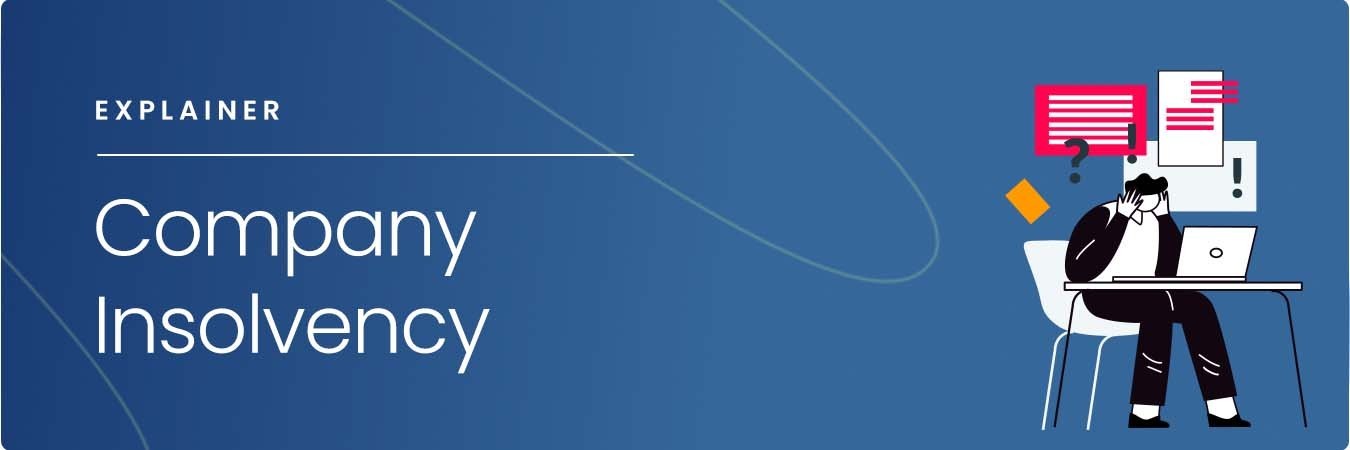3 Simple Techniques For Insolvency Practitioner
3 Simple Techniques For Insolvency Practitioner
Blog Article
What Does Insolvency Practitioner Mean?
Table of ContentsThe Single Strategy To Use For Insolvency Practitioner8 Easy Facts About Insolvency Practitioner DescribedThe Only Guide for Insolvency PractitionerThe Insolvency Practitioner PDFsInsolvency Practitioner Can Be Fun For EveryoneIndicators on Insolvency Practitioner You Should KnowThe Best Guide To Insolvency Practitioner
Insurance coverage is checked and managed by state insurance divisions, and one of their primary goals is securing insurance policy holders from the risk of a business in monetary distress. When a business goes into a duration of economic difficulty and is not able to fulfill its obligations, the insurance coverage commissioner in the business's home state launches a processdictated by the laws of the statewhereby initiatives are made to help the business reclaim its monetary footing.If it is figured out that the firm can not be refurbished, the business is declared financially troubled, and the commissioner will ask the state court to buy the liquidation of the company. [Back] The insurance commissioner, either selected by the governor or elected, heads the state insurance coverage department and screens and controls insurance coverage activity within the state.
By obtaining control of a firm, the commissioner (or the insurance coverage department) is, by legislation, the rehabilitator or liquidator of the company. In this capability, the commissioner or department takes control of the business's operations. Insolvency Practitioner. Rather than do so directly, the commissioner may keep an unique deputy receiver to oversee the firm's tasks.
The Buzz on Insolvency Practitioner
The receiver oversees an audit of the company's assets and obligations and carries out the estate of the company. In doing so, the receiver seeks to make the most of the business's properties, move them to cash money, and then distribute that cash to financial institutions having valid cases against the insurance firm in accordance with payment priorities specified by state regulation (in all states, policyholders are priority complaintants whose cases are paid prior to those of general lenders).
All insurance business (with restricted exemptions) accredited to sell life or health and wellness insurance policy or annuities in a state have to be members of that state's guaranty organization. The warranty organization cooperates with the commissioner and the receiver in pre-liquidation planning. Insolvency Practitioner. Once the liquidation is ordered, the guaranty association offers protection to the business's insurance policy holders that are state citizens (approximately the degrees defined by state lawssee below; any type of benefit amounts above the guaranty asociation benefit degrees come to be cases versus the business's staying assets)

Getting My Insolvency Practitioner To Work
Second, insurance firms doing company in that state are assessed a share of the quantity needed to fulfill the portion of the guaranty associations' protected claims not otherwise moneyed with estate properties. The amount insurance companies are assessed is based upon the amount of costs that they gather because state. [Back] The National Organization of Life and Medical Insurance Warranty Associations (NOLHGA) is composed of the life and medical insurance warranty organizations of all 50 states and the District of Columbia.
NOLHGA establishes a task force of representative guaranty organizations to deal with the insurance policy commissioner to establish a strategy to shield insurance policy holders. To find out more on NOLHGA's role at the same time, see "What Is NOLHGA?" and "The Safeguard at Job." [Back]
You are right here: Bankruptcy is when a company or person can't pay financial obligations when they are due. There are several options available to a bankrupt company or individual: ASIC regulates business, it does not handle individual insolvency procedures. For more info concerning insolvency and individual bankruptcy More about the author contracts, check out the Australian Financial Protection Authority site.
Things about Insolvency Practitioner
Anticipating security by helping you choose the right consumers and the appropriate markets to stay clear of uncollectable loan to begin with, thanks to intense economic analysis. Extensive market intelligence, providing you with 360-degree presence on service markets and impending troubles. It would be a simplification to think a profession credit insurance policy starts and ends with costs and pay-outs.
This can occur for a variety of factors, including inadequate monetary management, unanticipated expenses, or an adjustment in the marketplace. If a business is insolvent, it might be forced to shut down or liquidate properties to pay lenders. This can have a major influence on the company, staff members, and shareholders.
Why does a business get in right into insolvency? There are a number of reasons why a firm might enter into bankruptcy.
The Ultimate Guide To Insolvency Practitioner
Other reasons for bankruptcy consist of fraudulence, mismanagement, and unforeseen expenses. Insolvency can also lead to work losses and the closure of organizations.
This can have significant effects for the business, its stakeholders, creditors and the economy. The company might be required to sell properties, gave up personnel and even shut down. This can have a ripple effect on the neighborhood neighborhood and the economy all at once. Lenders might be excluded of pocket and the business's investors may see their financial investment vanish.
The Only Guide to Insolvency Practitioner
This can occur for a number of factors, consisting of poor financial management, unforeseen costs, or an adjustment out there. If a business is financially troubled, it might be required to shut down or offer off assets to pay creditors. This can have a major effect on business, workers, and investors.

Other factors for bankruptcy include fraudulence, mismanagement, and unforeseen costs. When a business becomes insolvent, its properties are utilized to repay its financial obligations. This can have a major effect on the company, as it might no longer have site web the ability to continue running. Insolvency can additionally result in work losses and the closure of services.
The smart Trick of Insolvency Practitioner That Nobody is Talking About
This can have significant implications for the business, its stakeholders, creditors and the economic situation. The business might be compelled to offer properties, lay off team or even shut down. This can have a knock-on impact on the neighborhood community and the economic climate all at once. Financial institutions might be overlooked of pocket and Going Here the business's investors may see their financial investment vanish.
Report this page